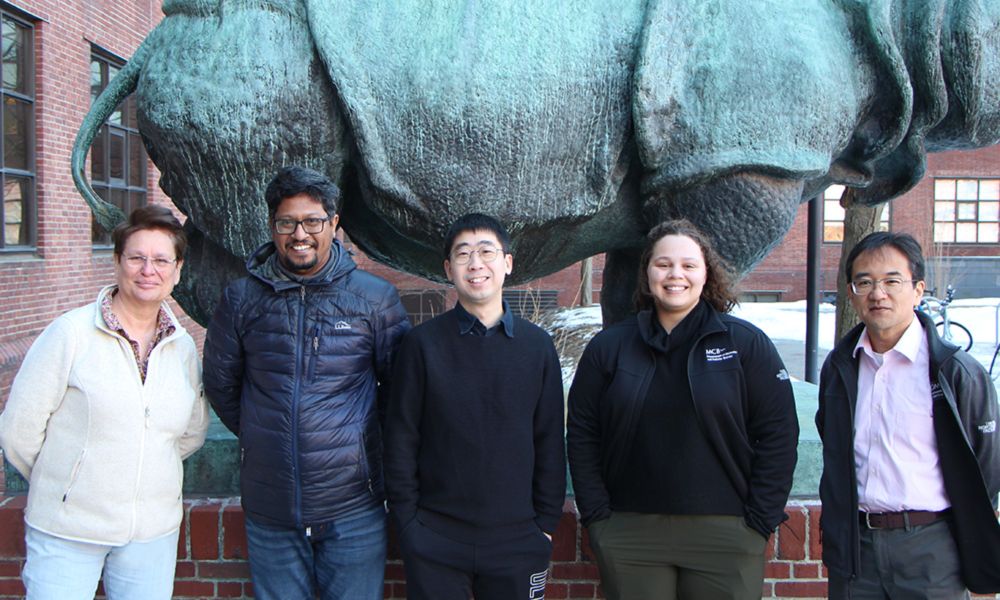
My Own Lab at Westlake University is OPEN! We are recruiting cool people at all levels NOW!
By tinkering behaviors and neural circuits in distinct animal species (mouse, sugar glider, etc), we are exploring new ways of doing social neuroscience in vivo, in silico and at home!
03.10.2025 08:09 — 👍 15 🔁 5 💬 1 📌 0
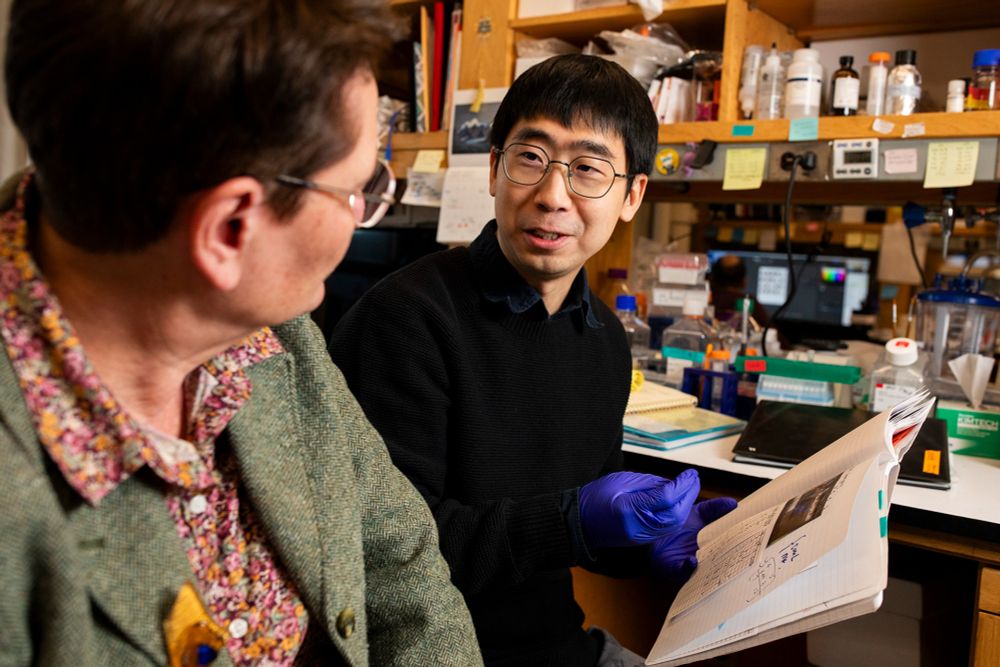
Is social connection a basic need like food, water? — Harvard Gazette
New research exploring the neurological basis behind the urge to be with other people suggests touch is an important factor.
The mechanics of how loneliness or instinctive social need is encoded in the brain are unclear.
From @dulaclab.bsky.social and colleagues, first author @dingliu.bsky.social
@naoshigeuchida.bsky.social
news.harvard.edu/gazette/stor...
28.03.2025 21:20 — 👍 6 🔁 3 💬 1 📌 0
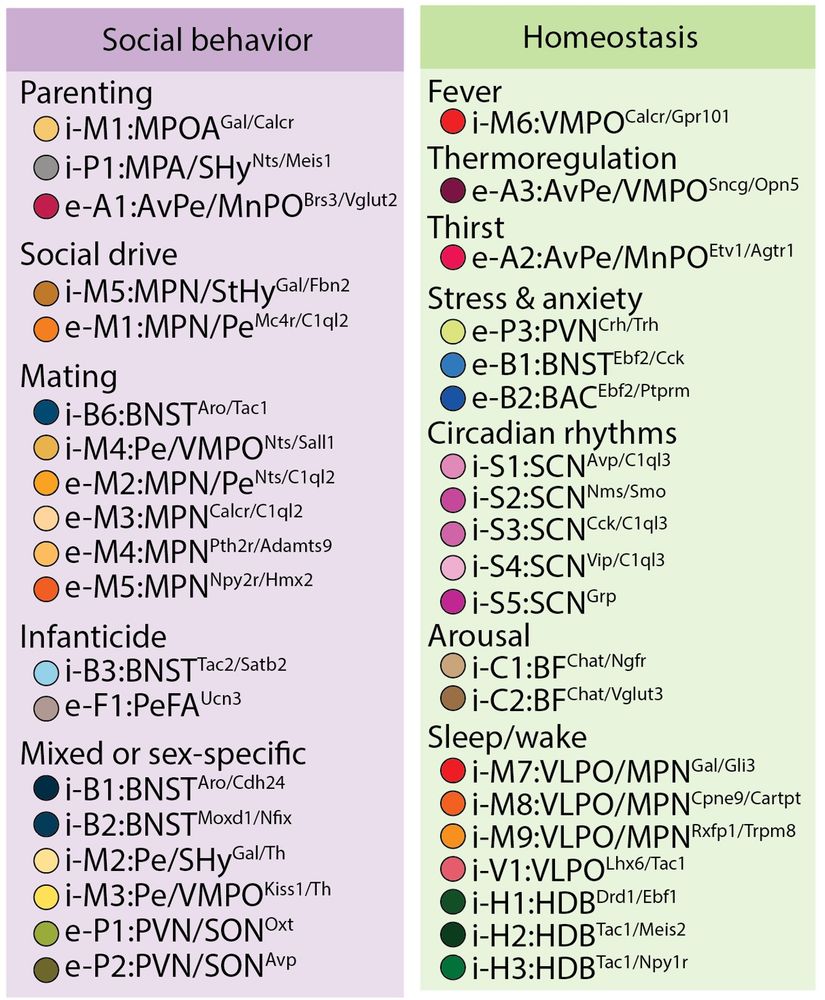
The dataset is massive: 200,000 cells and ~150 cell types, ~25% of which have known behavioral annotations thanks to previous work by many labs, such as @dulaclab.bsky.social work on parenting or social drive (recently published by @dingliu.bsky.social). Maybe you can spot your favorite cell type!
05.03.2025 22:04 — 👍 2 🔁 1 💬 1 📌 0
Delighted to share our new work just out today, led by terrific postdoc in the lab @harriskaplan.bsky.social: the development of instinct at the single cell level. Thread to follow shortly
www.nature.com/articles/s41...
05.03.2025 16:44 — 👍 37 🔁 8 💬 3 📌 1
Thank you so much, Ishmail! Really appreciated the mice and support you provided! Let’s keep in “touch”!
28.02.2025 03:37 — 👍 1 🔁 0 💬 0 📌 0
Hey Yoh! Long time no see. Thank you!
27.02.2025 16:14 — 👍 0 🔁 0 💬 0 📌 0
Thank you, Dayu!
27.02.2025 16:14 — 👍 0 🔁 0 💬 0 📌 0
Thank you, Sebastian!!
27.02.2025 16:13 — 👍 1 🔁 0 💬 0 📌 0
And the colleagues from the Dulac lab: @mostafizurrahman.bsky.social @Autumn Johnson @Zuri A. Sullivan @Nicolai Pena @Mustafa Talay @blogeman.bsky.social @Samantha Finkbeiner @Lechen Qian @Athena Capo-Battaglia (7/7)
27.02.2025 16:05 — 👍 2 🔁 0 💬 0 📌 0
Thank all the collaborators and lab members for their contribution and superb teamwork: @naoshigeuchida.bsky.social @Mitsuko Watabe-Uchida, @Ryunosuke Amo @Iku Tsutsui-Kimura @David Ginty @ssebastianchoi.bsky.social @ishmailsaboor.bsky.social (6/7)
27.02.2025 16:05 — 👍 3 🔁 0 💬 1 📌 1

We also found that touch is a key sensory modality for mice to perceive social environment, with lack of touch sensation leading to the emergence of social need, and its presence providing social satiety. (5/7)
27.02.2025 16:05 — 👍 3 🔁 0 💬 1 📌 0
Via projections to oxytocin neurons, lateral habenula and arcuate nucleus, Isolation neurons coordinate the enhanced social drive, aversive emotion and inhibition of eating during short-term social isolation. The projections from Reunion neurons to VTA led to dopamine release during reunion. (4/7)
27.02.2025 16:05 — 👍 2 🔁 0 💬 1 📌 0
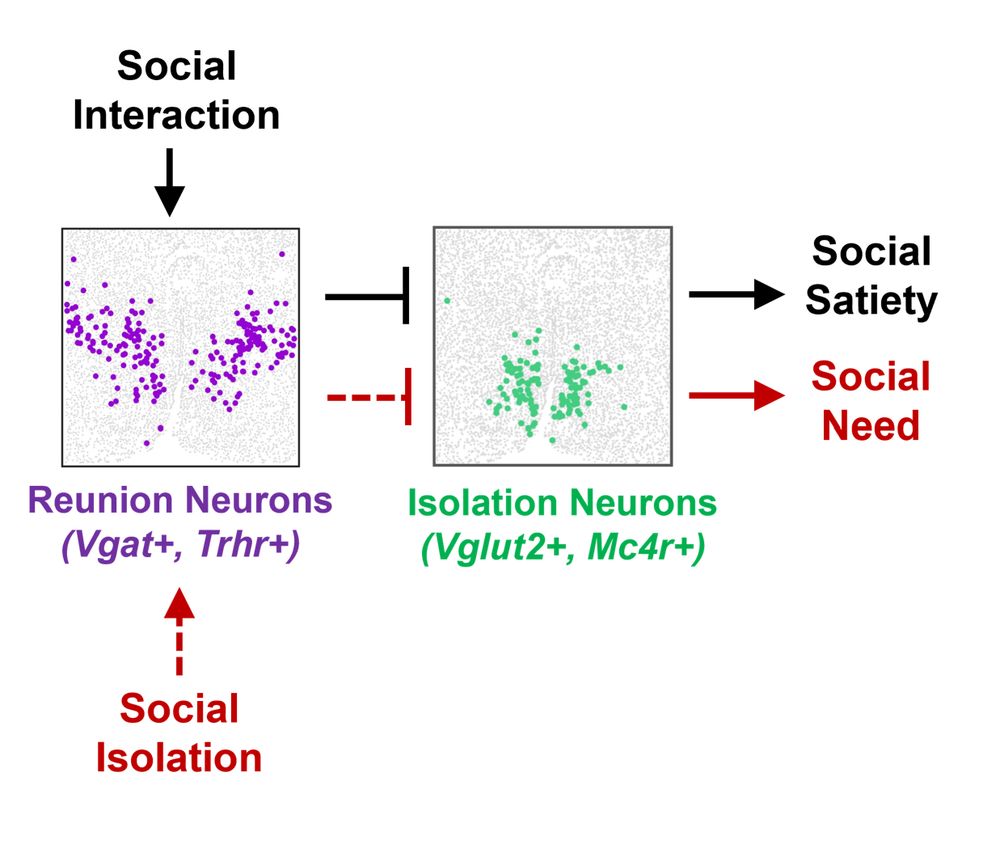
We further identified two molecularly defined interconnected neuronal populations in the hypothalamus, one activated by social isolation, the other by social reunion, together mediating a dynamic balance between “social need” and “social satiety” states. (3/7)
27.02.2025 16:05 — 👍 2 🔁 0 💬 1 📌 0
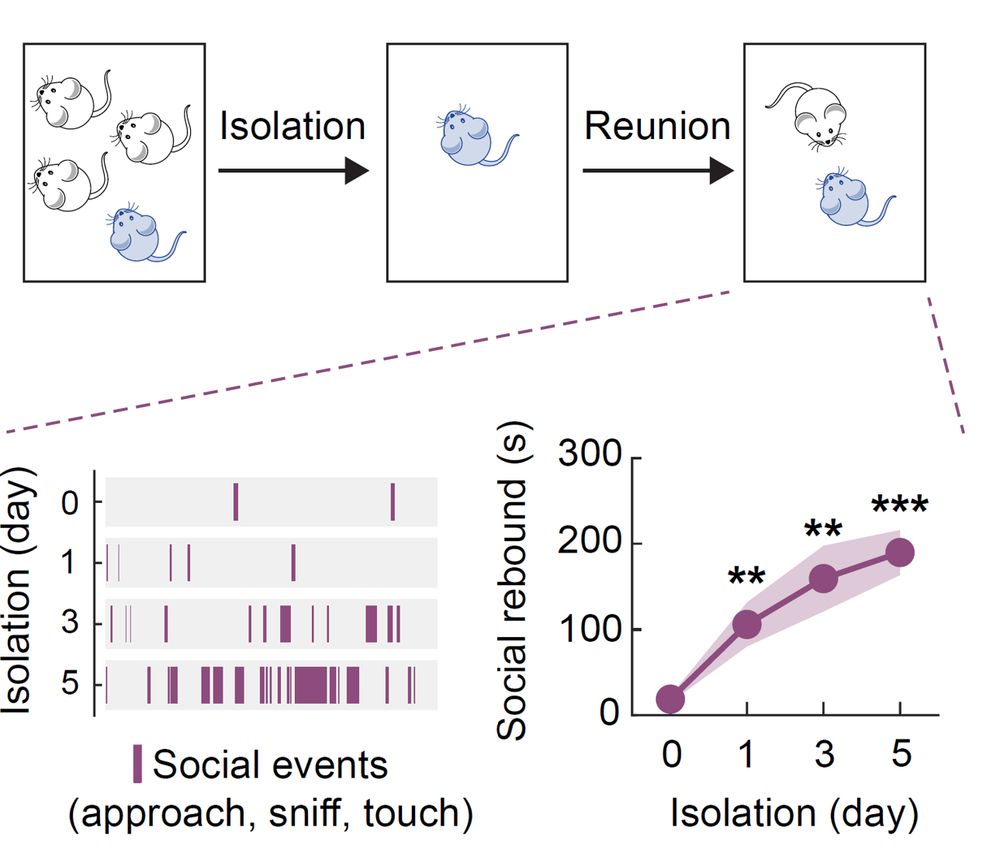
First, we characterized a "social rebound" behavior triggered by social isolation, which suggests a homeostatic regulation of social need. Intriguingly, different mouse strains showed distinct social rebound intensity after isolation, indicating a genetic basis for social need. (2/7)
27.02.2025 16:05 — 👍 3 🔁 0 💬 1 📌 0
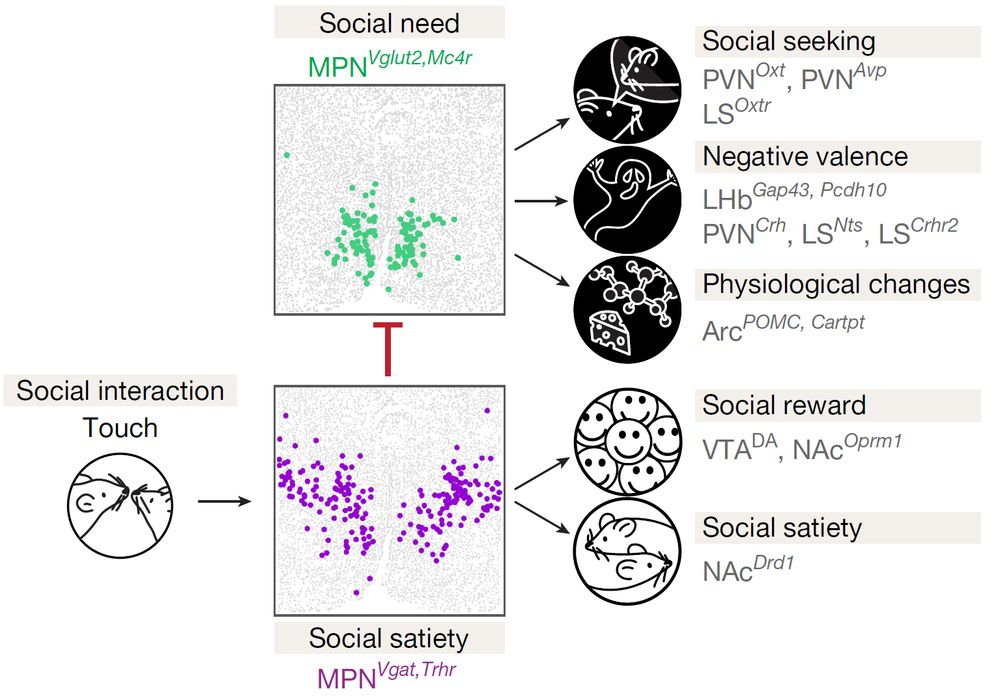
In our new paper @dulaclab.bsky.social, we investigated a fundamental question in social neuroscience: the origin of "sociality" (the need of being together) at the levels of behavior, neuron type, neural circuit and sensory modulation. (Detailed digest below) (1/7)
www.nature.com/articles/s41...
27.02.2025 16:05 — 👍 46 🔁 12 💬 2 📌 5
And the colleagues from the Dulac lab: @mostafizurrahman.bsky.social @Autumn Johnson @Zuri A. Sullivan @Nicolai Pena @Mustafa Talay @blogeman.bsky.social @Samantha Finkbeiner @Lechen Qian @Athena Capo-Battaglia (7/7)
27.02.2025 15:57 — 👍 0 🔁 0 💬 0 📌 0
Thank all the collaborators and lab members for their contribution and superb teamwork: @naoshigeuchida.bsky.social @Mitsuko Watabe-Uchida, @Ryunosuke Amo @Iku Tsutsui-Kimura @David Ginty @ssebastianchoi.bsky.social @ishmailsaboor.bsky.social (6/7)
27.02.2025 15:57 — 👍 1 🔁 0 💬 1 📌 0
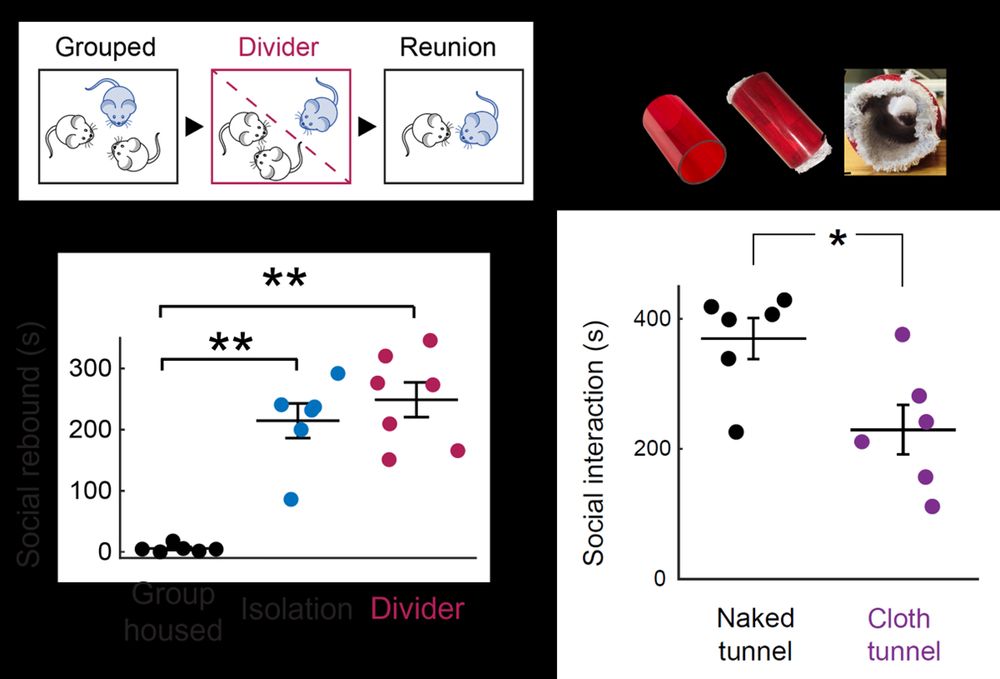
We also found that touch is a key sensory modality for mice to perceive social environment, with lack of touch sensation leading to the emergence of social need, and its presence providing social satiety. (5/7)
27.02.2025 15:57 — 👍 0 🔁 0 💬 1 📌 0
Via projections to oxytocin neurons, lateral habenula and arcuate nucleus, Isolation neurons coordinate the enhanced social drive, aversive emotion and inhibition of eating during short-term social isolation. The projections from Reunion neurons to VTA led to dopamine release during reunion. (4/7)
27.02.2025 15:57 — 👍 0 🔁 0 💬 1 📌 0
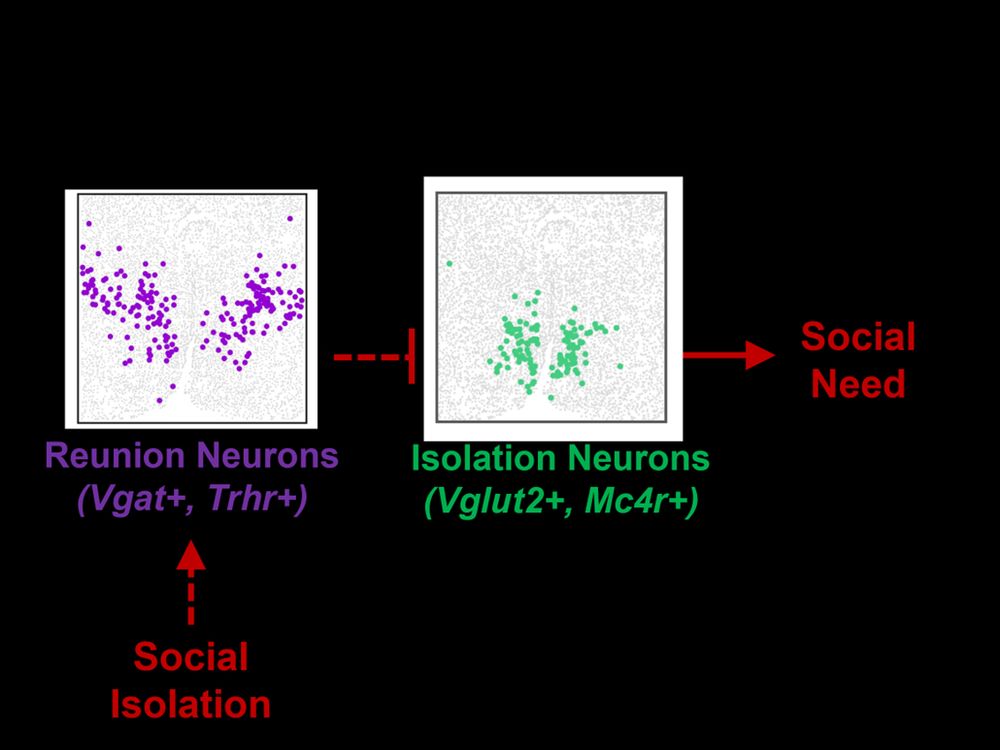
We further identified two molecularly defined interconnected neuronal populations in the hypothalamus, one activated by social isolation, the other by social reunion, together mediating a dynamic balance between “social need” and “social satiety” states. (3/7)
27.02.2025 15:57 — 👍 0 🔁 0 💬 1 📌 0

First, we characterized a "social rebound" behavior triggered by social isolation, which suggests a homeostatic regulation of social need. Intriguingly, different mouse strains showed distinct social rebound intensity after isolation, indicating a genetic basis for social need. (2/7)
27.02.2025 15:57 — 👍 0 🔁 0 💬 1 📌 0
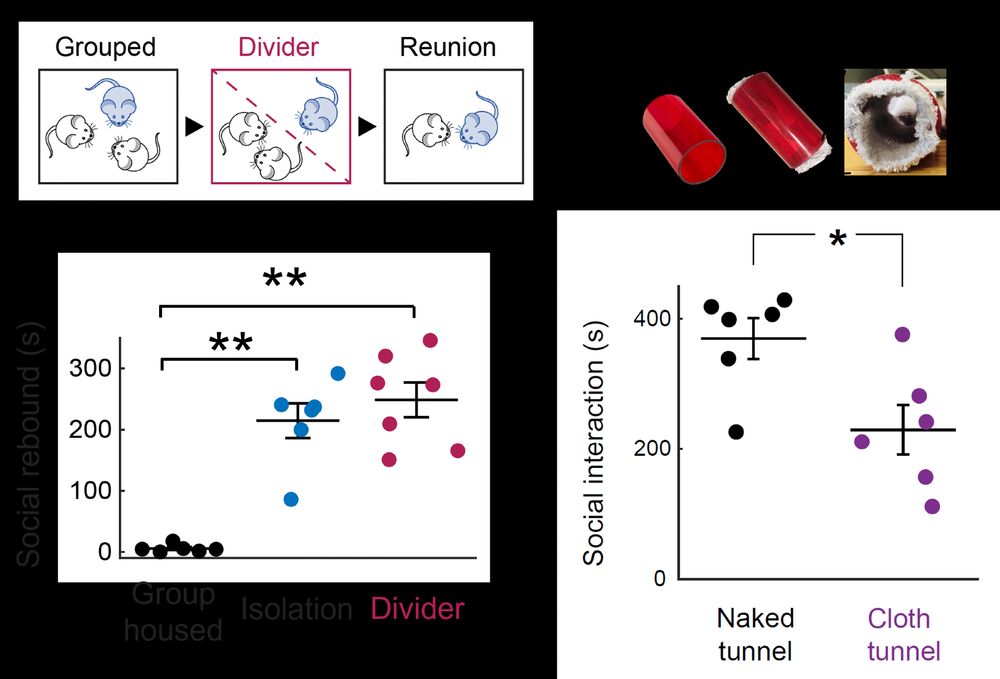
We also found that touch is a key sensory modality for mice to perceive social environment, with lack of touch sensation leading to the emergence of social need, and its presence providing social satiety. (5/7)
27.02.2025 15:48 — 👍 0 🔁 0 💬 0 📌 0

Via projections to oxytocin neurons, lateral habenula and arcuate nucleus, Isolation neurons coordinate the enhanced social drive, aversive emotion and inhibition of eating during short-term social isolation. The projections from Reunion neurons to VTA led to dopamine release during reunion. (4/7)
27.02.2025 15:48 — 👍 0 🔁 0 💬 1 📌 0
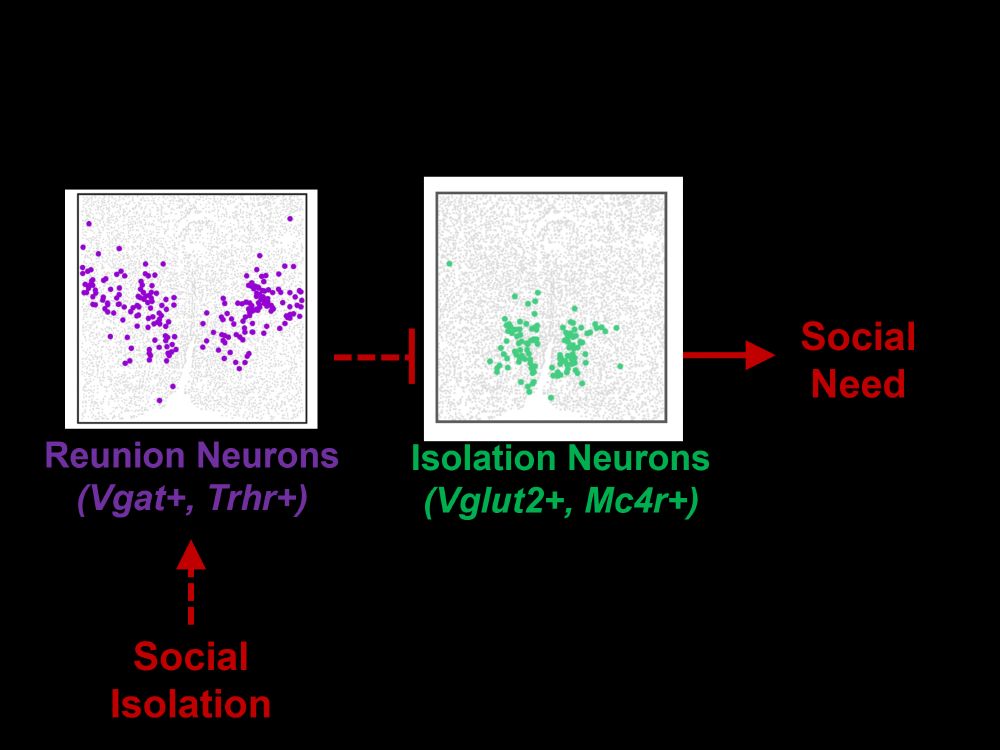
We further identified two molecularly defined interconnected neuronal populations in the hypothalamus, one activated by social isolation, the other by social reunion, together mediating a dynamic balance between “social need” and “social satiety” states. (3/7)
27.02.2025 15:48 — 👍 0 🔁 0 💬 1 📌 0

First, we characterized a "social rebound" behavior triggered by social isolation, which suggests a homeostatic regulation of social need. Intriguingly, different mouse strains showed distinct social rebound intensity after isolation, indicating a genetic basis for social need. (2/7)
27.02.2025 15:48 — 👍 0 🔁 0 💬 1 📌 0

We also found that touch is a key sensory modality for mice to perceive social environment, with lack of touch sensation leading to the emergence of social need, and its presence providing social satiety. (5/7)
27.02.2025 15:38 — 👍 0 🔁 0 💬 0 📌 0
Via projections to oxytocin neurons, lateral habenula and arcuate nucleus, Isolation neurons coordinate the enhanced social drive, aversive emotion and inhibition of eating during short-term social isolation. The projections from Reunion neurons to VTA led to dopamine release during reunion. (4/7)
27.02.2025 15:38 — 👍 0 🔁 0 💬 1 📌 0

We further identified two molecularly defined interconnected neuronal populations in the hypothalamus, one activated by social isolation, the other by social reunion, together mediating a dynamic balance between “social need” and “social satiety” states. (3/7)
27.02.2025 15:38 — 👍 0 🔁 0 💬 1 📌 0

First, we characterized a "social rebound" behavior triggered by social isolation, which suggests a homeostatic regulation of social need. Intriguingly, different mouse strains showed distinct social rebound intensity after isolation, indicating a genetic basis for social need. (2/7)
27.02.2025 15:38 — 👍 0 🔁 0 💬 1 📌 0
Doctoral Researcher at @mpicbs.bsky.social |somatosensory, heart-brain interaction, working memory | @MPS_cog | Alumni Institute of Neuroscience, CAS
CNET Editor at Large and host of the weekly Apple video series “One More Thing”; also: Geek at Large, Mom at Large. Find my adventures on TikTok and IG: @BridgetsWidgets
Nature gives us so much. Now is the time to give back. Nature Needs Us Now. WWF-US
Consumer-tech writer at Yahoo, finder of deals (https://dealsecrets.substack.com/), author of "Everything I Need to Know, I Learned Playing Pickleball," Twitter escapee.
The official Bluesky account of the City of Boston. For non-emergency services, please call 311.
Boston.gov
Unser Planet braucht euch. Lasst uns zusammen Klima, Natur, Umwelt und Artenvielfalt schützen. https://www.wwf.de
Founder of Stride for Stride
6x Boston Marathoner
01/10/24: Kidney Transplant Recipient
11/03/24: Ran NYC Marathon with my Donor
04/21:25: Ran Boston Marathon with Donor
#DonateLife
http://kidneyrunner.com
New England's leading source for breaking news and analysis.
bostonglobe.com
The official Bluesky account of the Massachusetts Bay Transportation Authority (MBTA)
mbta.com
Developmental Neurobiologist, Vision Neuroscientist, Bay Area Resident
Cell Press partners with scientists across all disciplines to publish and share work that will inspire future directions in research. #ScienceThatInspires
The funder-researcher collaboration and open-access publisher for research in the life and biomedical sciences.
Follow @eLifeCommunity.bsky.social
We explore the very foundations of life for the benefit of all. Our team of world-class, award-winning scientists pushes the boundaries of knowledge in research areas including aging, cancer and immunology to diabetes, and brain science.
Neuroscientist at the Allen Institute for Neural Dynamics



